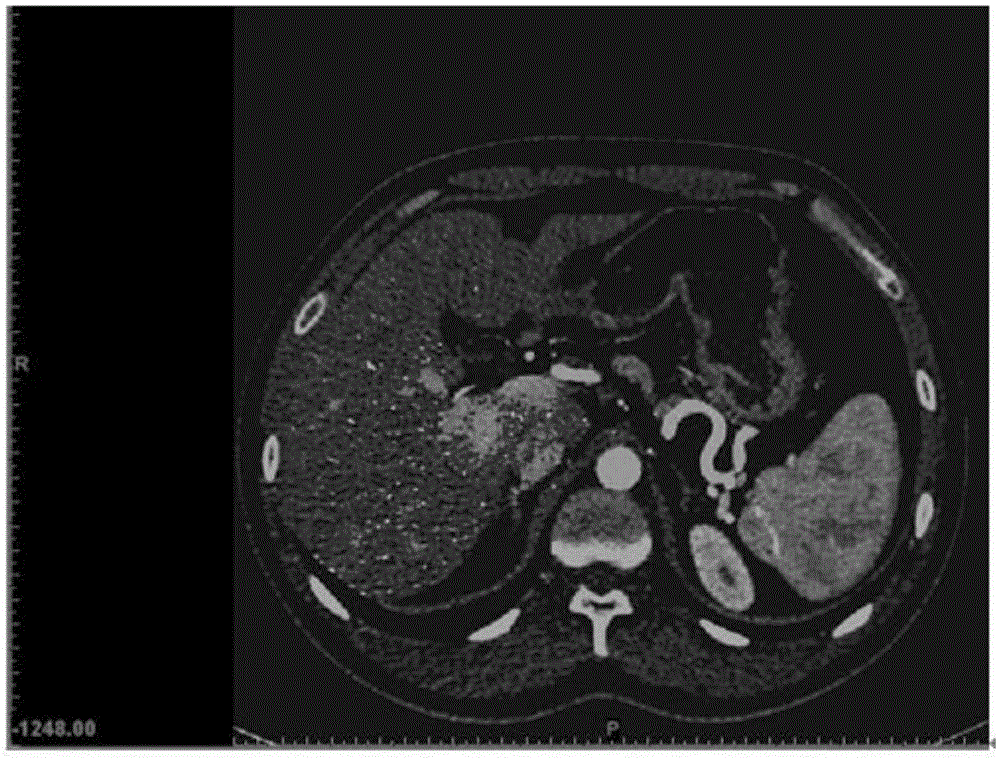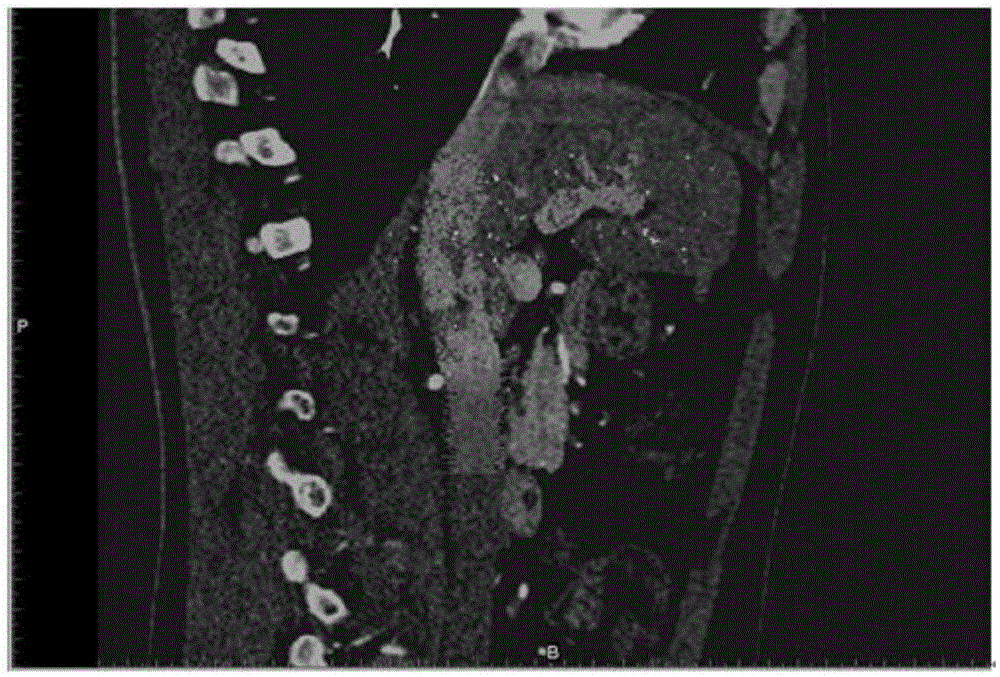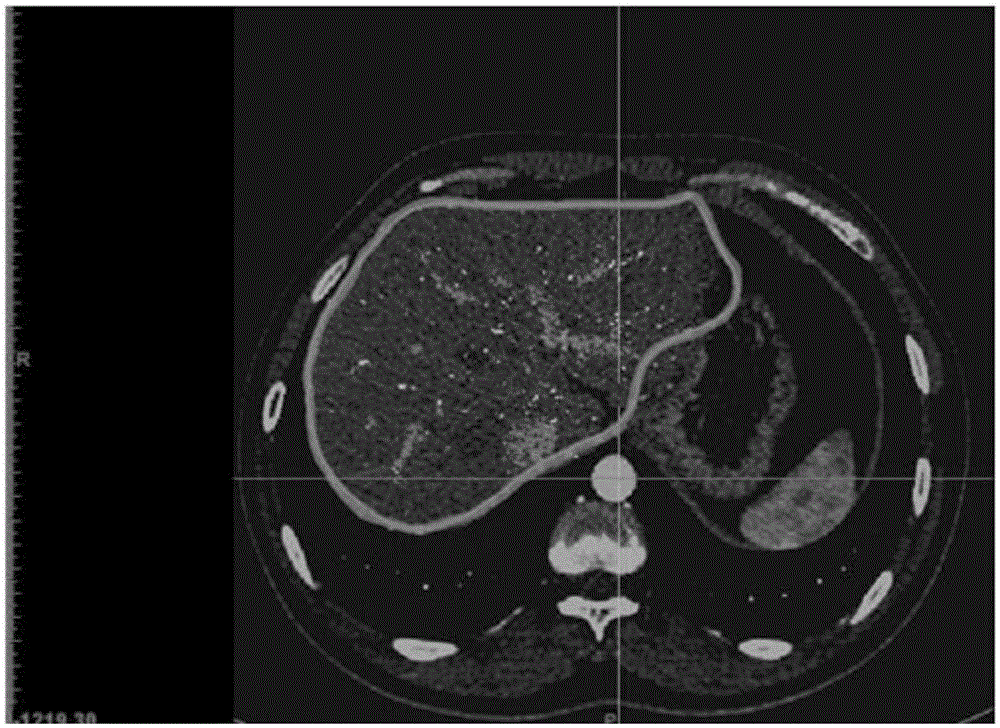Tumor grid organ model 3D printing method
A 3D printing and organ technology, applied in the medical field, can solve the problems of accurately judging the distance parameters of internal tumors and blood vessels in organs, high printing costs, and the inability to print organs themselves at the same time
- Summary
- Abstract
- Description
- Claims
- Application Information
AI Technical Summary
Problems solved by technology
Method used
Image
Examples
Embodiment
[0015] like Figure 1-5 As shown, the present invention provides a method for 3D printing a grid organ model of a tumor. Using the transverse section and sagittal plane of the human body in the supine position, the surface of the organ is used to establish a plurality of cross grids, and the grids are printed out. Organ models, and print tumors and blood vessels at the same time.
[0016] The original data (.dicom file) of medical imaging (CT or MRI), through special 3D modeling software, such as 3DSlicer, read the image and create 3D data, and finally print the generated 3D data through a "3D printer"; At the same time as the 3D data of blood vessels, the CT or MRI planes of the transverse and sagittal planes are selected to establish the 3D grid of the organ surface.
[0017] Manually outline the edge of the organ outline on the cross-section, and select a cylindrical line with a diameter of 3mm (conventional 3D modeling software can complete the line), and outline the edge...
PUM
 Login to View More
Login to View More Abstract
Description
Claims
Application Information
 Login to View More
Login to View More - R&D
- Intellectual Property
- Life Sciences
- Materials
- Tech Scout
- Unparalleled Data Quality
- Higher Quality Content
- 60% Fewer Hallucinations
Browse by: Latest US Patents, China's latest patents, Technical Efficacy Thesaurus, Application Domain, Technology Topic, Popular Technical Reports.
© 2025 PatSnap. All rights reserved.Legal|Privacy policy|Modern Slavery Act Transparency Statement|Sitemap|About US| Contact US: help@patsnap.com



